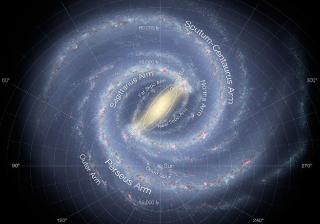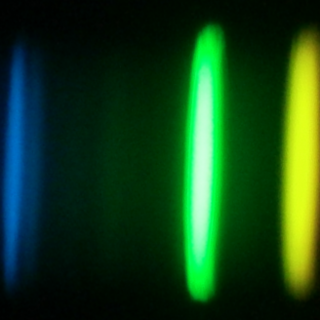Bibcode
López-Corredoira, M.; Sylos Labini, F.; Kalberla, P. M. W.; Allende Prieto, C.
Referencia bibliográfica
The Astronomical Journal, Volume 157, Issue 1, article id. 26, 13 pp. (2019).
Fecha de publicación:
1
2019
Número de citas
10
Número de citas referidas
10
Descripción
We measure the mean Galactocentric radial component of the velocity of
stars (v R ) in the disk at 8 kpc < R < 28 kpc in the
direction of the anticenter. For this, we use the Apache Point Galactic
Evolution Experiment. Furthermore, we compare the result with H I maps
along the same line of sight. We find an increase in positive
(expansion) v R at R ≈ 9–13 kpc, reaching a
maximum of ≈6 km s‑1, and a decrease at large values
of R, reaching a negative (contraction) value of ≈‑10 km
s‑1 for R > 17 kpc. Negative velocities are also
observed in 21 cm H I maps, possibly dominated by local gas emission.
Among the possible dynamical causes for these non-zero v R ,
factors such as the effect of the Galactic bar, streams, or mergers do
not seem appropriate to explain our observations. An explanation might
be the gravitational attraction of overdensities in a spiral arm. As a
matter of fact, we see a change of regime from positive to negative
velocities around R ≈ 15 kpc, in the position where we cross the
Outer spiral arm in the anticenter. The mass in spiral arms necessary to
produce these velocities would be about 3% of the mass of the disk,
consistent with our knowledge of the spiral arms. Another scenario that
we explore is a simple class of out-of-equilibrium systems in which
radial motions are generally created by the monolithic collapse of
isolated self-gravitating overdensities.
Proyectos relacionados

Morfología y dinámica de la Vía Láctea
El Proyecto se estructura en dos partes, diferenciadas pero complementarias: morfología y dinámica. El estudio detallado de la morfología de la Vía Láctea pretende proveer una base de datos de distribución estelar en las regiones más alejadas y extintas de nuestra Galaxia, mediante el desarrollo de modelos semiempíricos a partir de la información
Martín
López Corredoira

Abundancias Químicas en Estrellas
La espectroscopía de estrellas nos permite determinar las propiedades y composiciones químicas de las mismas. A partir de esta información para estrellas de diferente edad en la Vía Láctea es posible reconstruir la evolución química de la Galaxia, así como el origen de los elementos más pesados que el boro, forjados principalmente en los interiores
Carlos
Allende Prieto